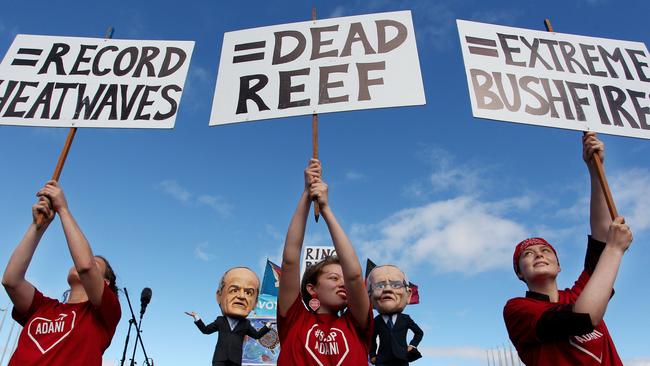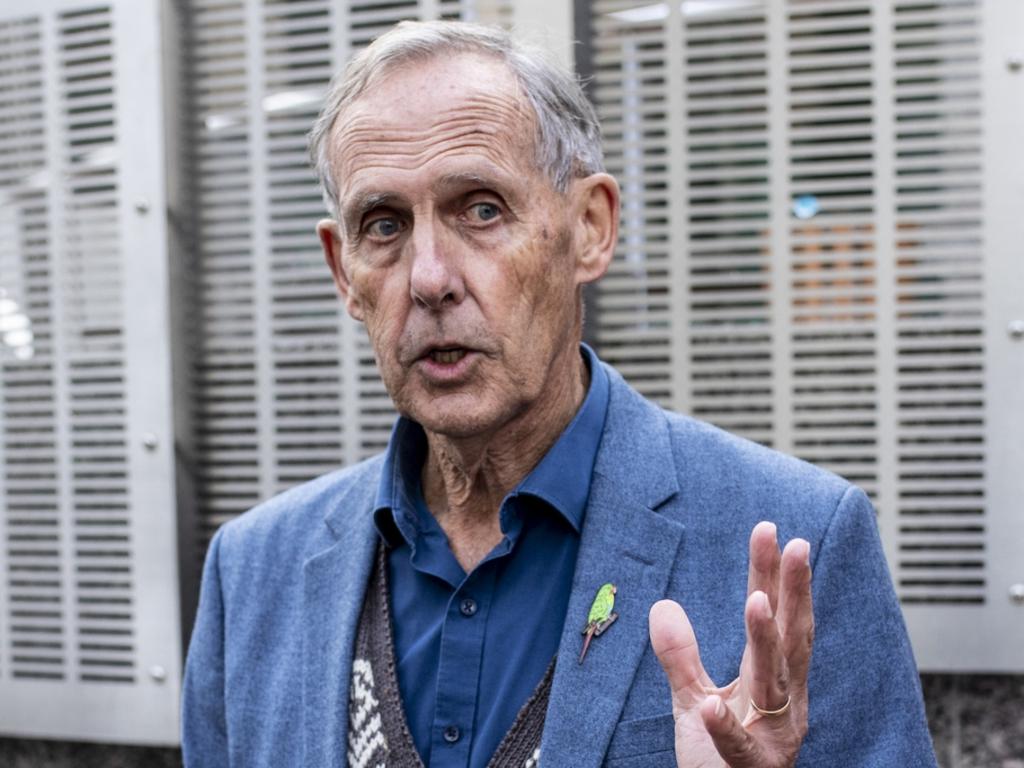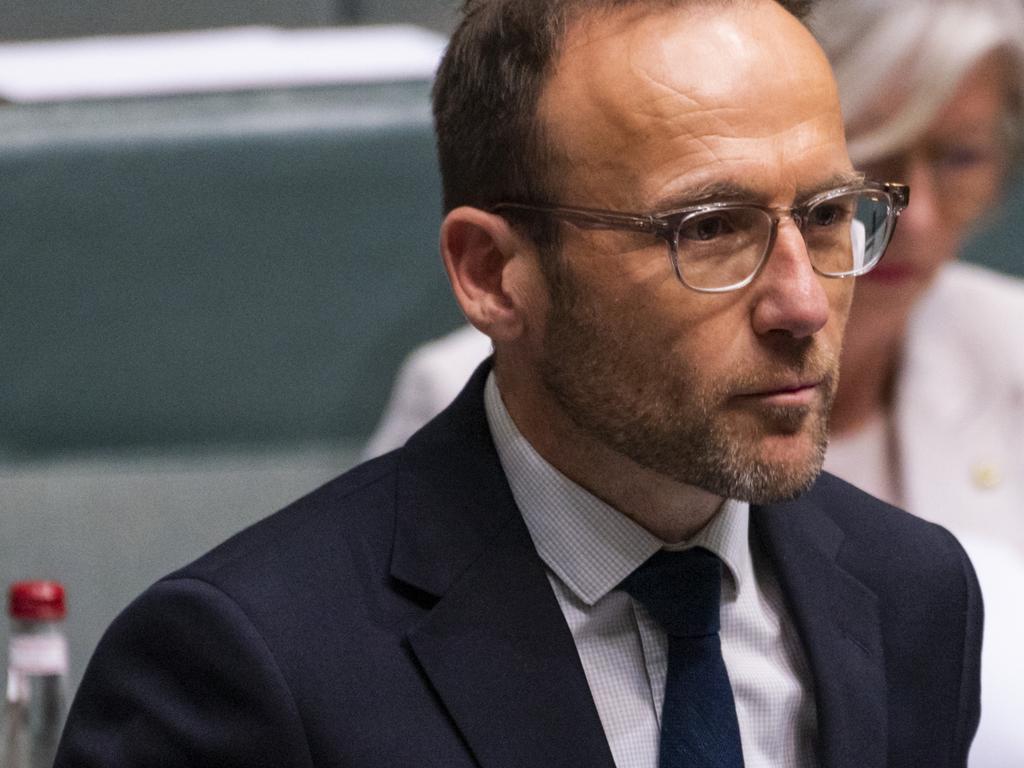Should Labor turn to the Greens as workers desert?
If the ALP wants to return to power, and govern long-term, it may have no other choice but to dance with the devil after all.

Now, to be clear, I have always argued Labor should orient itself toward the centre ground of politics and that means competing for voters to its right flank – Liberals, Nationals and minor parties such as One Nation. The political centre is where elections are won.
But Labor has been unable to regain lost voters, on its left or right flanks, and lift its primary vote above 40 per cent and form a governing majority. In the past 25 years, Labor has achieved this just once – in 2007.
Bob Brown led the Greens in the Tasmanian and federal parliaments. In an interview with Inquirer, he said it remains his ambition that the Greens replace Labor as the main party on the left. But, in the interim, he argued Labor needed to realise that working with the Greens, via preference deals or in a power-sharing arrangement, is the only way it can form a government. “The Greens are in a consolidated and powerful position in the parliament,” Brown said. “They will win more seats at the next election. Labor is treading water and the Greens are going to continue to grow. The Greens are the party of the future.
“Labor has got to get over this idea that it is going to have solid majority power in the future. It is going to need to share it with the Greens. It is going to need to do that on the basis of the Greens promoting both the environment and social justice.”
It is undeniable that Labor is in decline and the Greens are on the rise. In 1993, Labor won 45 per cent of the vote and the Greens just 1.9 per cent. By the 2019 election, Labor’s vote fell to 33 per cent of the vote and the Greens’ vote increased to 10 per cent.
The Greens’ Adam Bandt won the seat of Melbourne from Labor in 2010. It remains the only Greens seat in the lower house. The Greens are a permanent fixture in the Senate, where they have nine senators and 10 per cent of the upper house vote. (It reached 13 per cent in 2010.) The Greens have MPs in every state parliament and the ACT, where it is in coalition with Labor.
It is worth noting that 80 per cent of Greens votes go to Labor as preferences. Labor won 10 seats on preferences after coming second on the primary vote in 2019. It is also valid to note that Labor-plus-Greens votes have not been enough to form a government since the 2010-13 parliament. So, is a partnership really necessary?
It is also possible that a formal arrangement with the Greens would drive working- and middle-class voters to the Liberals. Labor’s research showed this is what prompted many voters to abandon the Gillard government in 2013.
French economist Thomas Piketty’s study of centre-left parties – which I wrote about a fortnight ago – shows working-class voters shifting to the Liberals. Labor has lost its edge with working-class voters.
Labor is viewed as increasingly left-wing so why not temper the attacks on the Greens and present a united-left front? This is the Brown argument.
However, Piketty’s study suggests a Labor-Greens alliance would make for uncomfortable bedfellows. Greens voters are more educated, wealthier, urban-living and motivated by post-materialist issues. But what other choice does Labor have? Nothing else seems to be working. Parties across the left working together in government is common around the world. The Liberals and Nationals are in coalition.
But Labor is divided on the question of co-operating with the Greens. Most Labor members, clustered around inner-city suburbs, are comfortable with Green politics. They want Labor to be stronger on climate change, oppose offshore refugee detention and support higher business and income taxes. But Labor MPs view the Greens as an enemy; the devil incarnate. Anthony Albanese has seen the Green vote rise from 4.5 per cent (1996) to 22.5 per cent (2019) in his inner-Sydney seat of Grayndler. Many of his voters opt for state Greens MPs Jamie Parker (Balmain) and Jenny Leong (Newtown). It is likely the Greens will win Grayndler whenever Albanese retires.
At the next federal election, as Bandt told my colleague, Greg Brown, the Greens will target Labor-held Richmond, Griffith and Macnamara. These campaigns will be a drain on Labor’s already depleted war chest. Losing seats to the Greens, which will happen in coming decades, will further erode the party’s electoral base and undermine its capacity to form government on its own.
Labor’s viability as a party that can win elections and form government is in doubt. Labor’s challenge is existential: it goes to its identity, structure, constituency, candidates and leadership. The Greens have hollowed out Labor’s electoral support. The Greens think Labor’s attacks only undermine the ALP’s progressive credentials.
Yet Labor MPs despise the Greens’ holier-than-thou approach to policy, their political opportunism, disdain for compromise and pragmatism, and doubt whether they could ever graduate from being a party of protest to a party of power. But maybe Labor needs to rethink its approach to the Greens. If it wants to return to power, and govern long-term, it may have no other choice but to dance with the devil after all.








With Labor’s primary vote bouncing around the mid to low 30s at every federal election in the past decade, the party must confront the question it has been avoiding: should it form some kind of partnership with the Greens?